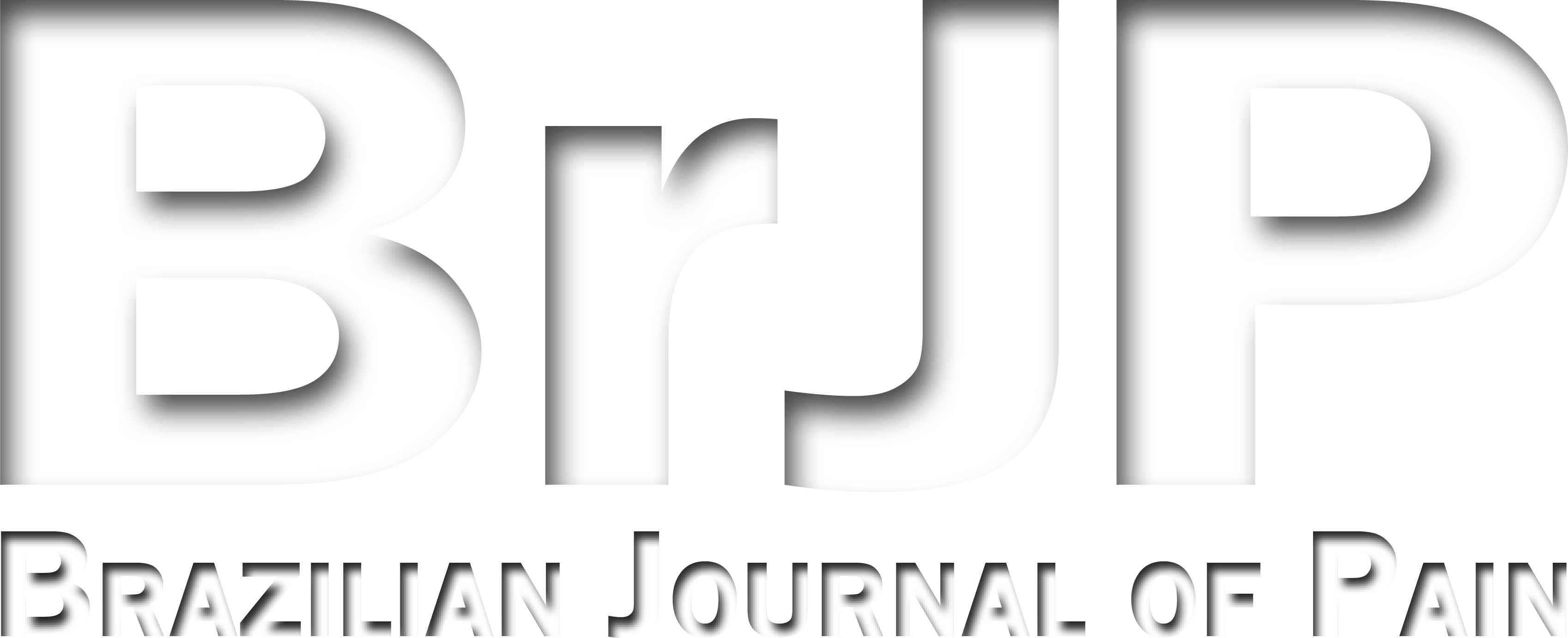Health professionals' barriers in the management, evaluation, and treatment of neonatal pain
Barreiras dos profissionais de saúde no manuseio, avaliação e tratamento da dor neonatal
Marialda Moreira Christoffel; Danielle Lemos Querido; Ana Luiza Dorneles da Silveira; Bruna Nunes Magesti; Ana Letícia Monteiro Gomes; Ana Claudia Coelho Santos da Silva
Abstract
Keywords
Resumo
Palavras-chave
References
Soares AC, Caminha MF, Coutinho AC, Ventura CM. Pain in the neonatal unit: the knowledge, attitude and practice of the nursing team. Cogitare Enferm. 2016;21(2):1-10.
Sposito NP, Rossato LM, Bueno M, Kimura AF, Costa T, Guedes DM. Assessment and management of pain in newborns hospitalized in a Neonatal Intensive Care Unit: a cross-sectional study. Rev Lat Am Enfermagem. 2017;25.
Anand KJ, Eriksson M, Boyle EM, Avila-Alvarez A, Andersen RD, Sarafidis K. Assessment of continuous pain in newborns admitted to NICUs in 18 European countries. Acta Paediatr. 2017;106(8):1248-59.
Lago P, Frigo AC, Baraldi E, Pozzato R, Courtois E, Rambaud J. Sedation and analgesia practices at Italian neonatal intensive care units: results from the EUROPAIN study. Ital J Pediatr. 2017;43(1):26.
Courtois E, Droutman S, Magny JF, Merchaoui Z, Durrmeyer X, Roussel C. Epidemiology and neonatal pain management of heelsticks in intensive care units: EPIPPAIN 2, a prospective observational study. Int J Nurs Stud. 2016;59:79-88.
Valeri BO, Holsti L, Linhares MB. Neonatal pain and developmental outcomes in children born preterm: a systematic review. Clin J Pain. 2015;31(4):355-62.
Direitos da Criança e do Adolescente Hospitalizados. Resolução n° 41 de outubro de 1995. 1995.
Prevention and management of procedural pains in the neonate. Pediatrics. 2016;137(2).
Marfurt-Russenberger K, Axelin A, Kesselring A, Franck LS, Cignacco E. The experiences of professionals regarding involvement of parent s in neonatal pain management. J Obstet Gynecol Neonatal Nurs. 2016;45(5):671-83.
Abdel Razeq NM. Barriers that impede the provision of pain care to neonates by nurses in Jordan. J Obstet Gynecol Neonatal Nurs. 2016;45(3):371-7.
Cong X, Delaney C, Vazquez V. Neonatal nurses' perceptions of pain assessment and management in NICUs: a national survey. Adv Neonatal Care. 2013;13(5):353-60.
Christoffel MM, Castral TC, Dare MF, Montanholi LL, Scochi CG. Knowledge of healthcare professionals on the evaluation and treatment of neonatal pain. Rev Bras Enferm. 2016;69(3):516-22.
Carneiro SM, Dutra HS, Costa FM, Mendes SE, Sena CA. Uso de abreviaturas nos registros de enfermagem em um hospital de ensino. Rev Rene. 2016;17(2):208-16.
Atenção humanizada ao recém-nascido de baixo peso: Método canguru: manual técnico. 2013.
Puchalski Ritchie LM, Khan S, Moore JE, Timming C, van Lettow M, Vogel JP. Low- and middle-income countries face many common barriers to implementation of maternal health evidence products. J Clin Epidemiol. 2016;76:229-37.
Prestes AC, Balda RC, Santos GM, Rugolo LM, Bentlin MR, Magalhães M. Painful procedures and analgesia in the NICU: what has changed in the medical perception and practice in a ten-year period?. J Pediatr. 2016;92(1):88-95.
Mörelius E, He HG, Shorey S. Salivary cortisol reactivity in preterm infants in neonatal intensive care: an integrative review. Int J Environ Res Public Health. 2016;13(3).
Martins SW, Dias FS, Enumo SR, Paula KM. Pain assessment and control by nurses of a neonatal intensive care unit. Rev Dor. 2013;14(1):21-6.
Atenção à saúde do recém-nascido: guia para os profissionais de saúde. 2014;4.
Purteimur S, Nouri M. The barriers to pain management in the neonatal intensive care unit. Pediatric Crit Care Med. 2014;15(^sSuppl 4):214.
Lim Y, Godambe S. Prevention and management of procedural pain in the neonate: an update, American Academy of Pediatrics 2016. Arch Dis Child Educ Pract Ed. 2017;102(5):254-6.
Menegueti MG, Nicolussi AC, Scarparo AF, Campos LF, Chaves LD, Laus AM. Nursing personnel staffing in hospital services: an integrative literature review. Rev Eletr Enferm. 2013;15(2):551-63.
Santos MC, Gomes MF, Capellini VK, Carvalho VC. Maternal assessment of pain in premature infants. Rev Rene. 2015;16(6):842-7.
Submitted date:
06/13/2018
Accepted date:
12/10/2018


